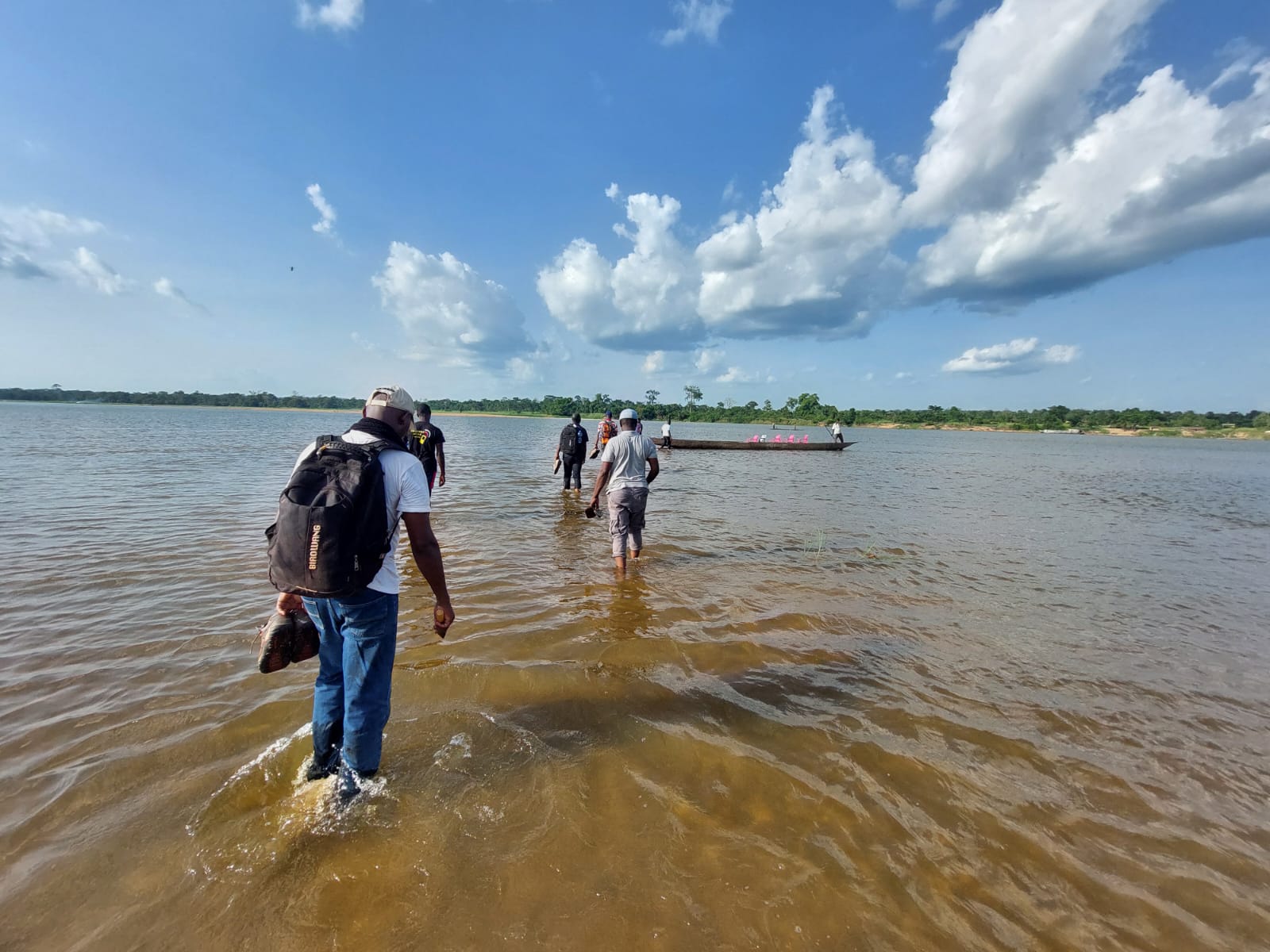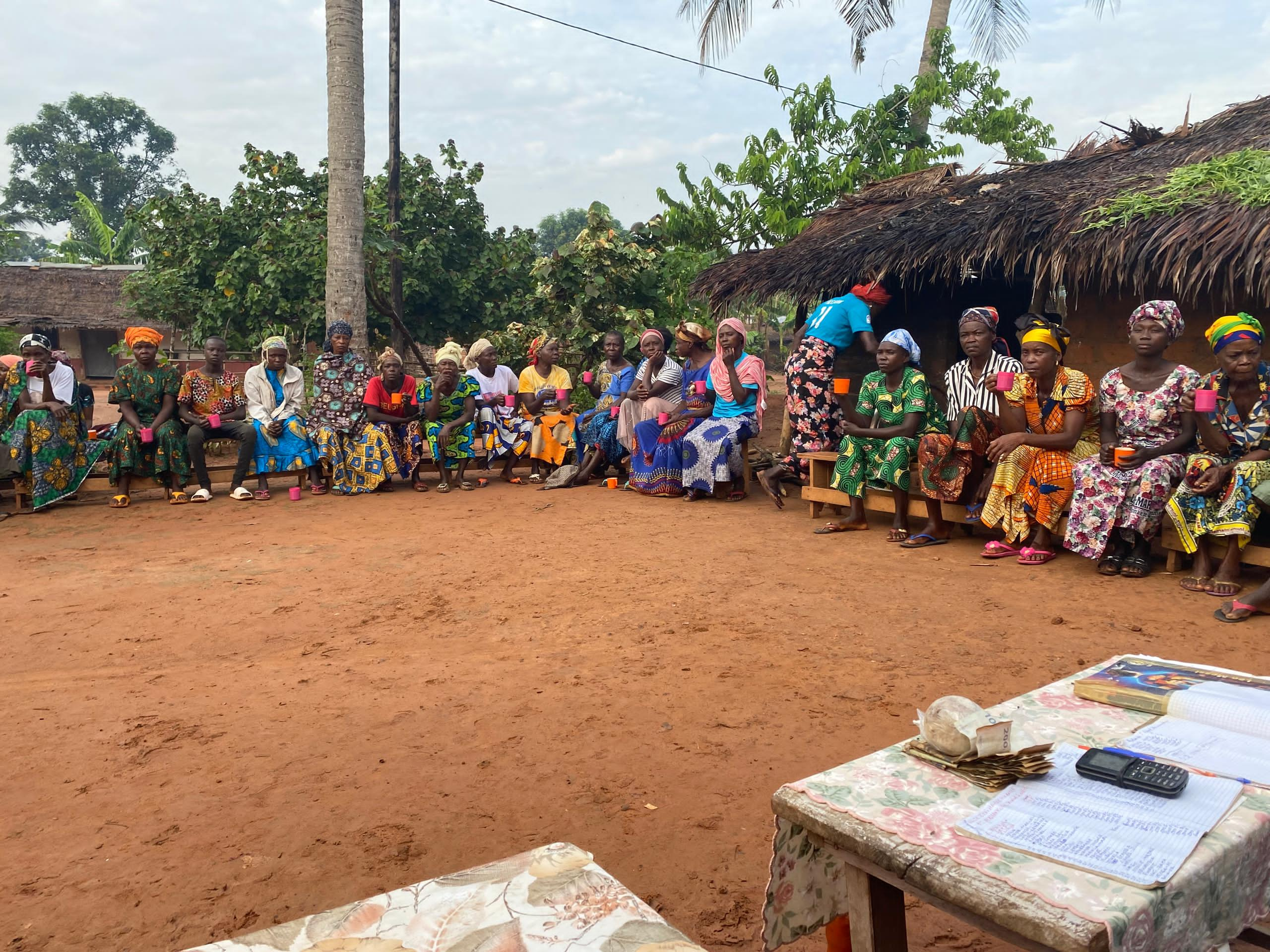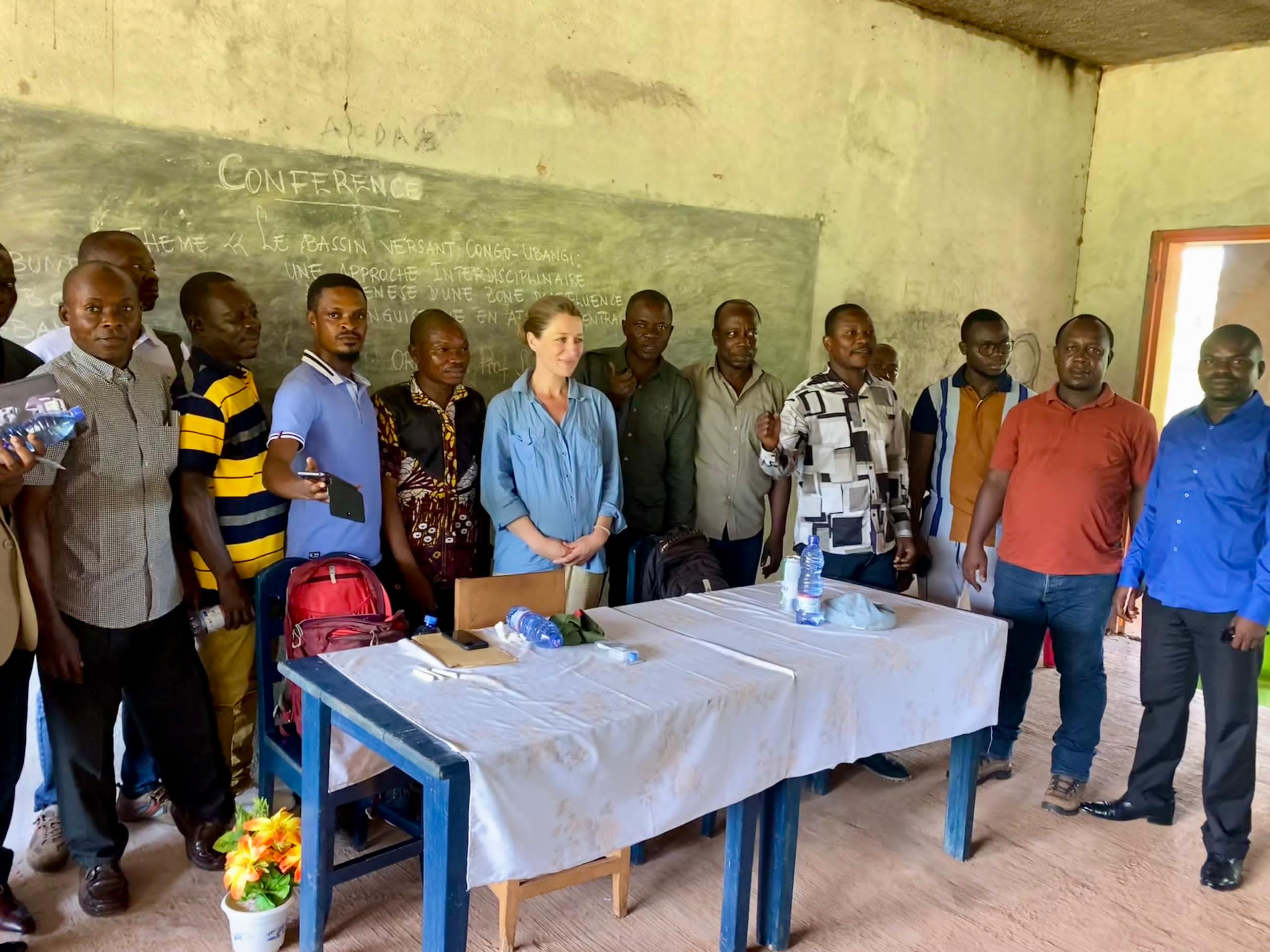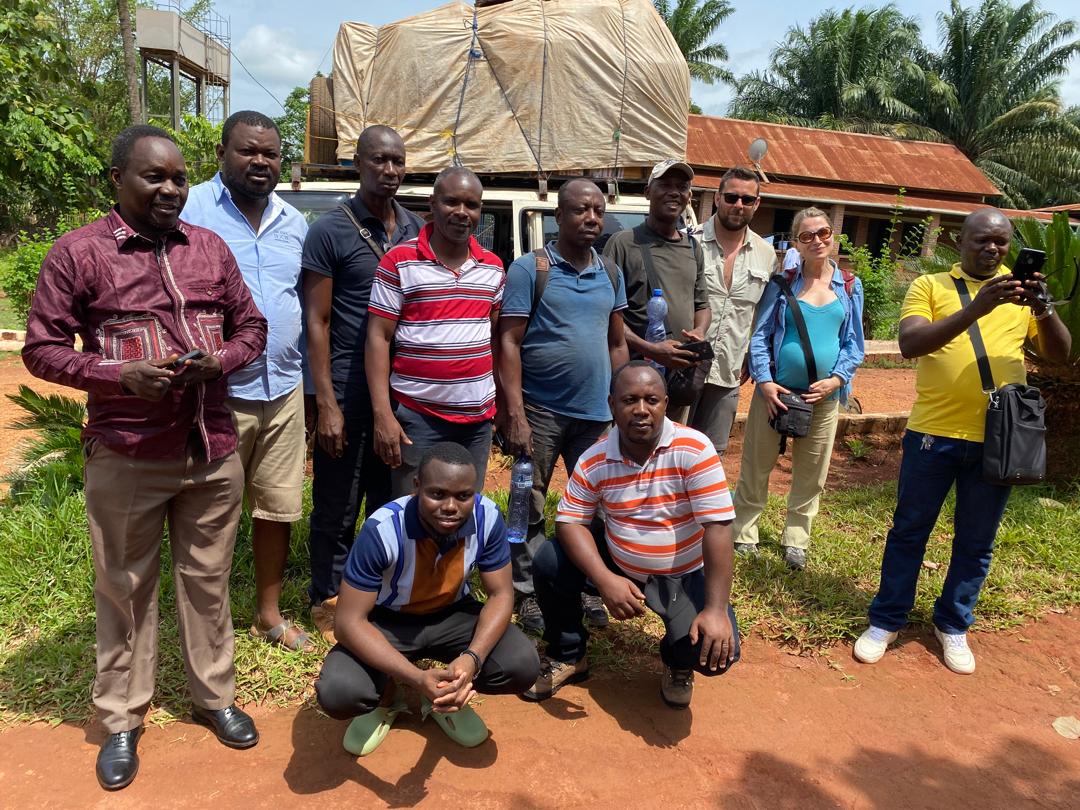At the 53rd Colloquium on African Languages and Linguistics in Leiden (August 26-28), Hilde Gunnink and Nina van der Vlugt (BantUGent) presented their collaborative research in the joint talk titled “The development of lateral obstruents in Southern Bantu: A comparative diachronic study“.
Author: Koen Bostoen
BantUGent at Bantu10 in Dar es Salaam
The 10th International Conference on Bantu Languages (Bantu10) was held at the Dar es Salaam University College of Education (DUCE), Tanzania on August 12-14, 2024. Among many others, the program included eleven talks involving BantUGent people (bolded), including a keynote talk opening the conference.
- “Swahili impact in the strong necessity domain” by Rasmus Bernander, Gilles-Maurice de Schryver, Maud Devos, Ponsiano Kanijo
- “Reconstructing the Bantu Expansion: Do linguists still matter?” by Koen Bostoen (keynote talk)
- “Proto-West-Coastal Bantu personal and possessive pronouns: Morphological reconstruction and low-level subgrouping” by Koen Bostoen, Sara Pacchiarotti and Heidi Goes
- “Imagined Language Unity versus Observed Language Diversity in Cabinda” by Heidi Goes and Koen Bostoen
- “The development of lateral obstruents in Southern Bantu: A comparative diachronic study” by Hilde Gunnink and Nina van der Vlugt
- “The genealogy of Yeyi (R41): an only child in Eastern Bantu” by Hilde Gunnink, Natalia Chousou-Polydouri and Koen Bostoen
- “Labial-velar stops in Sakata: phonology, acoustics, aerodynamics” by Lorenzo Maselli
- “Early Bantu loans from and into Cushitic” by Maarten Mous and Nina van der Vlugt
- “Language contact in the Lower Zambezi River at the origin of Chikunda: Bantu Spirantization as a diagnostic case study?” by Edward Ntonda, Rozenn Guérois and Koen Bostoen
- “On the polyfunctional nature of the verbal prefix ka- in Chikunda” by Rozenn Guérois and Aron Zahran
- ““Nothing is in vain”: Non- standard negation in Central Tanzanian Bantu.” by Aron Zahran
BantUGent at WOCAL11 in Nairobi
The 11th World Congress of African Linguistics (WOCAL11) was held at the University of Nairobi, Kenya on August 5-9, 2024. The program included, among many others, several talks involving BantUGent people (bolded):
- “The verb -weza in and out of Swahili” by Rasmus Bernander, Gilles-Maurice de Schryver, Maud Devos, Ponsiano Kanijo
- “The lifeworld of ancestral West-Coastal Bantu speakers: insights from lexical reconstruction” by Koen Bostoen, Jessamy Doman, Sara Pacchiarotti and Sifra Van Acker
- “Stilled objects versus cultural histories. Reconnecting museum objects related to coffee and cassava to past and present Tetela vocabularies” by Maud Devos, Inge Brinkman, Joseph Djongakodi, Sarah O’Neill and Mathilde Wendenda
- “Labial-velar stops in Sakata: phonology, acoustics, aerodynamics” by Lorenzo Maselli
- “Identifying language contact in Bantu N40 languages through the analysis of cultural vocabulary” by Edward Ntonda
- “Teasing apart Shona’s linguistic strata: New insights from comparative Bantu pottery vocabulary” by Nina van der Vlugt, Hilde Gunnink & Koen Bostoen
- “Classifying Chikunda: A comparison of the noun class systems of the Zambezi Valley Bantu languages” by Aron Zahran and
Rozenn Guérois
Lorenzo Maselli obtains a three-year postdoctoral grant from the UGent Special Research Fund (BOF)
On Monday June 24, 2024, the UGent Special Research Fund (BOF) published the list of the 35 selectees for a three-year postdoctoral grant. One of them is Lorenzo Maselli (BantUGent) for “Labial-velars, implosives and other sound rarities between Congo and Ubangi: A pioneering phonetic, aerodynamic, and articulatory approach” under the supervision of Prof. Sara Pacchiarotti, who currently leads the ERC-funded CongUbangi project. Congratulations, Lorenzo!
Nina van der Vlugt and Aron Zahran talk at the Leiden Conference on the Linguistic History of East Africa
On 6-8 June 2024, Leiden University organizes a conference on the Linguistic History of East Africa with also contributions by Nina van der Vlugt and Aron Zahran from our research group. Tuning in online is possible! The program is available here and more info here.
CongUbangi project team back from fieldwork in north-western DRC
-

On the way to an archaeological exploration along the Ubangi

From April 17 to May 8, 2024, the CongUbangi team and associated researchers carried out a first joint fieldwork mission in Gemena and Libenge, in the province of Sud-Ubangi in the Democratic Republic of the Congo (DRC). The linguistic team consisted of Sara Pacchiarotti, Jean-Pierre Donzo Bunza, Paulin Baraka Bose, and Chrisnah Renaudot Mfouhou. The archaeological team consisted of Peter Coutros, Igor Matonda, Holy Ondel Ilo (Institut des Musées Nationaux du Congo), Lucien Pierre Nguerede and Henri Zana. The team collected new linguistic, archaeological and genetic data and worked in close collaboration with local partners. More info is available here.


Sara Pacchiarotti’s CongUbangi ERC project launches new website
The CongUbangi project funded by an ERC Starting Grant awarded to Prof. Sara Pacchiarotti, which started at the beginning of 2024, has launched a new website.
Heidi Goes talks for the Kongo Academy
BantUGent welcomes Lis Kerr for postdoctoral research on Mbam Bantu
On May 16 2024, Elisabeth (Lis) Kerr , who is currently finishing her PhD research at Leiden University (Netherlands), obtained a 3-year postdoctoral fellowship from the Research Foundation – Flanders (FWO) for research on a project titled “Modelling Bantu Analytic Morphosyntax (MBAM): The Mbam languages as a case study in morphosyntactic change“. The abstract can be found below. Her research will be co-hosted by BantUGent (under the supervision of Prof. Koen Bostoen) and ΔiaLing (under the co-supervision of Prof. Anne Breitbarth and Prof. Alexandra Simonenko). Welcome to BantUGent, Lis!

Abstract
Over time and space, languages can change fundamentally in their structure (morphosyntax). A key example of such variation is the change between analytic and synthetic morphosyntax. Such variation is clearly visible within Niger-Congo, the world’s largest language phylum. On the synthetic side, the Bantu family is particularly well-known in theoretical linguistics for its complex verb forms. Bantu’s closest relatives within Niger-Congo’s Benue-Congo branch, on the other hand, show much more analytic morphosyntax, expressing in multiple words what many Bantu languages typically express using a single verb form. While it is clear that morphosyntactic change has taken place within the Niger-Congo phylum, it is still debated in what direction(s) this change occurred and how such change can be captured in formal models. This debate within Niger-Congo studies reflects a more general question about variation and directionality of morphosyntactic change crosslinguistically. This project will contribute to this theoretical debate about the mechanisms of analytic ↔ synthetic morphosyntactic change by using a case study of the Mbam languages of Cameroon, a group of closely-related Bantu languages with an intermediary morphosyntactic profile. By developing a model to capture the synchronic and diachronic variation in the degree of analyticity of the Mbam languages, the results will contribute to the fields of historical linguistics, theoretical syntax, and African languages.
BantUGent welcomes Arnaud Bizongwako (UBurundi) for joint PhD research on West Highlands Bantu
On May 15 2024, Arnaud Bizongwako (University of Burundi) obtained a 24-month PhD scholarship from the UGent Special Research Fund (BOF) for his joint PhD project titled “Is it syntax and/or discourse? A combined corpus and historical-comparative linguistic approach to the conjoint/disjoint alternation in East-African West Highlands Bantu“. West Highlands Bantu is a group of closely related languages from the Great Lakes region of Eastern Africa including Kirundi and Kinyarwanda. The in-depth study of this grammatical phenomenon involves building a new Kinyarwanda corpus and collecting new fieldwork data in four poorly known languages from Tanzania. At the University of Burundi in Bujumbura, Arnaud will be supervised by Prof. Ferdinand Mberamihigo, who obtained himself in 2014 a joint PhD degree at Ghent University (UGent) and Brussels University (ULB) and is a BantUGent associate. Within BantUGent, Arnaud will be co-supervised by Prof. Koen Bostoen and Prof. Gilles-Maurice de Schryver, whom also co-supervised Ferdinand Mberamihigo earlier on. Welcome to BantUGent, Arnaud!








